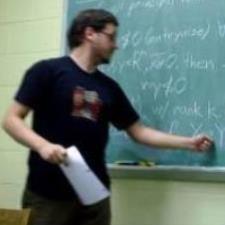Stephen H. answered • 11/06/23
Tutor of Math, Physics and Engineering ... available online
1) Find the complementary solution by solving first the characteristic equation D^2+6D+9 (assuming the D is the differential operator) to find r1,r2= -3, -3 (repeated roots).
2) With repeated real roots the complementary solution will be yc=c1e^rx+c2te^rx
3) Since g(x) = 17e^2x the particular solution will have the form Ae^2x
4) Substiture Ae^2x into the original problem to find D^2y=4Ae^2x, Dy=2Ae^2x, y=Ae^2x
5) Match coefficients to find A=17/25, thus yc=25e^2x
6) y=yc+yp
7) answer is a)





